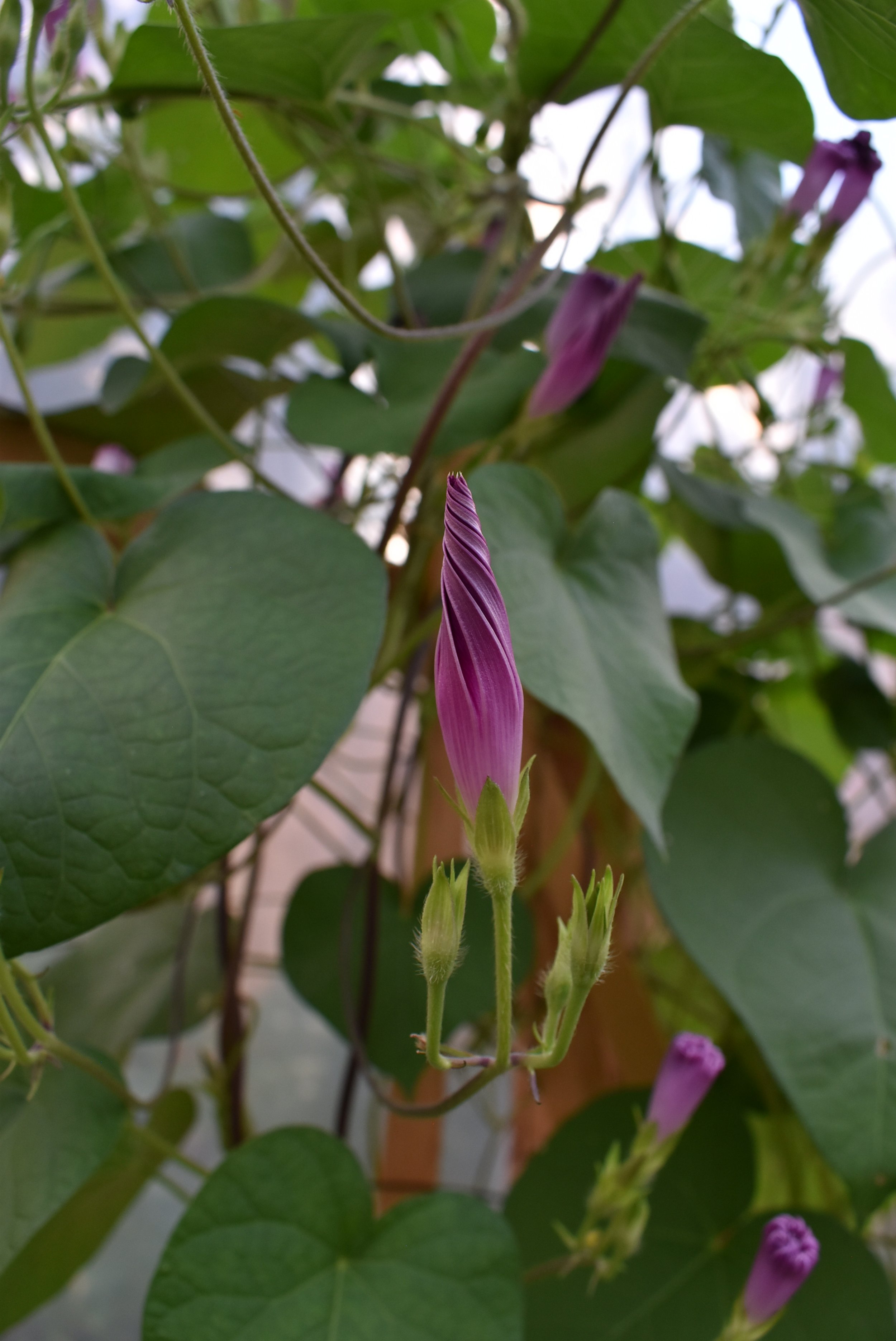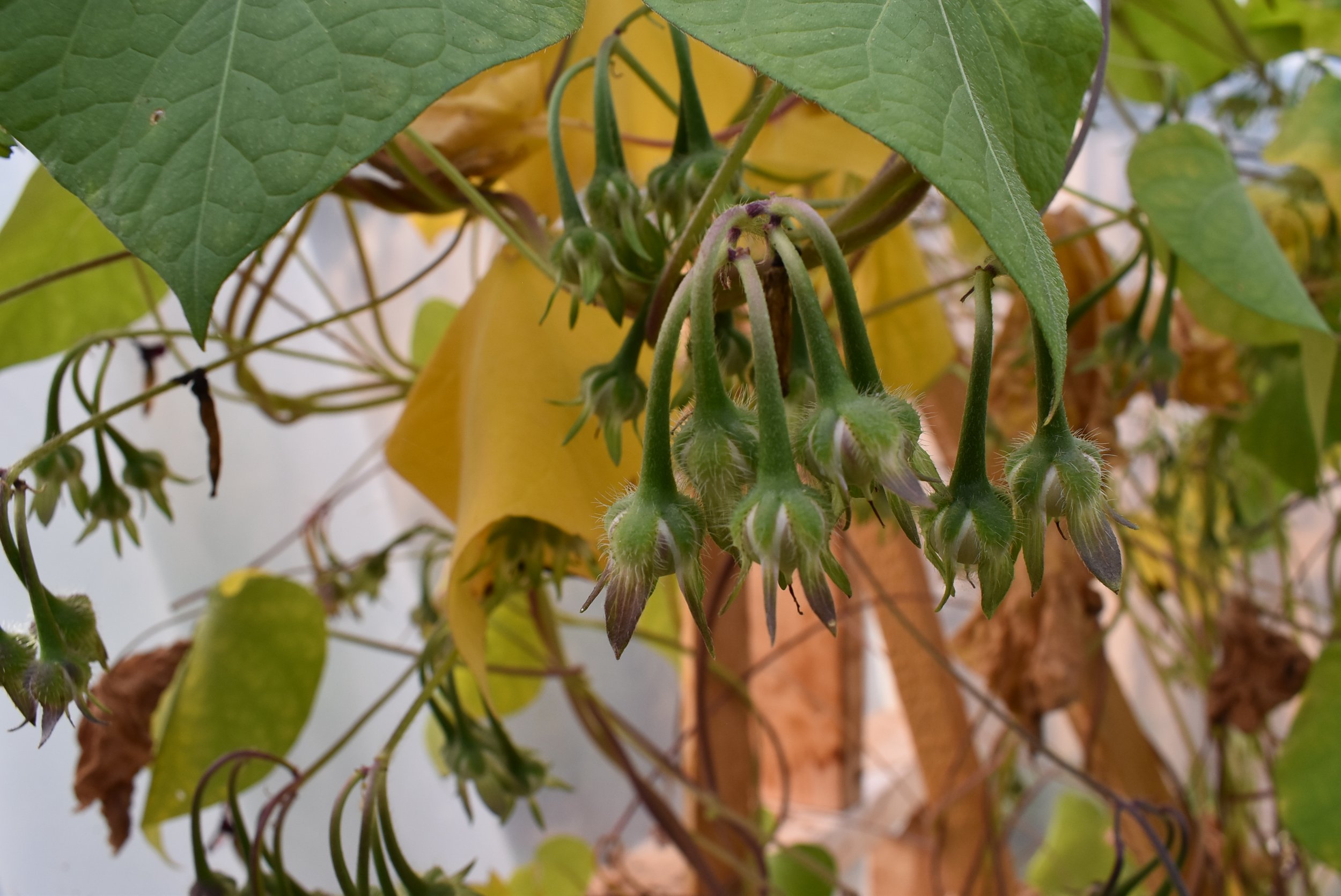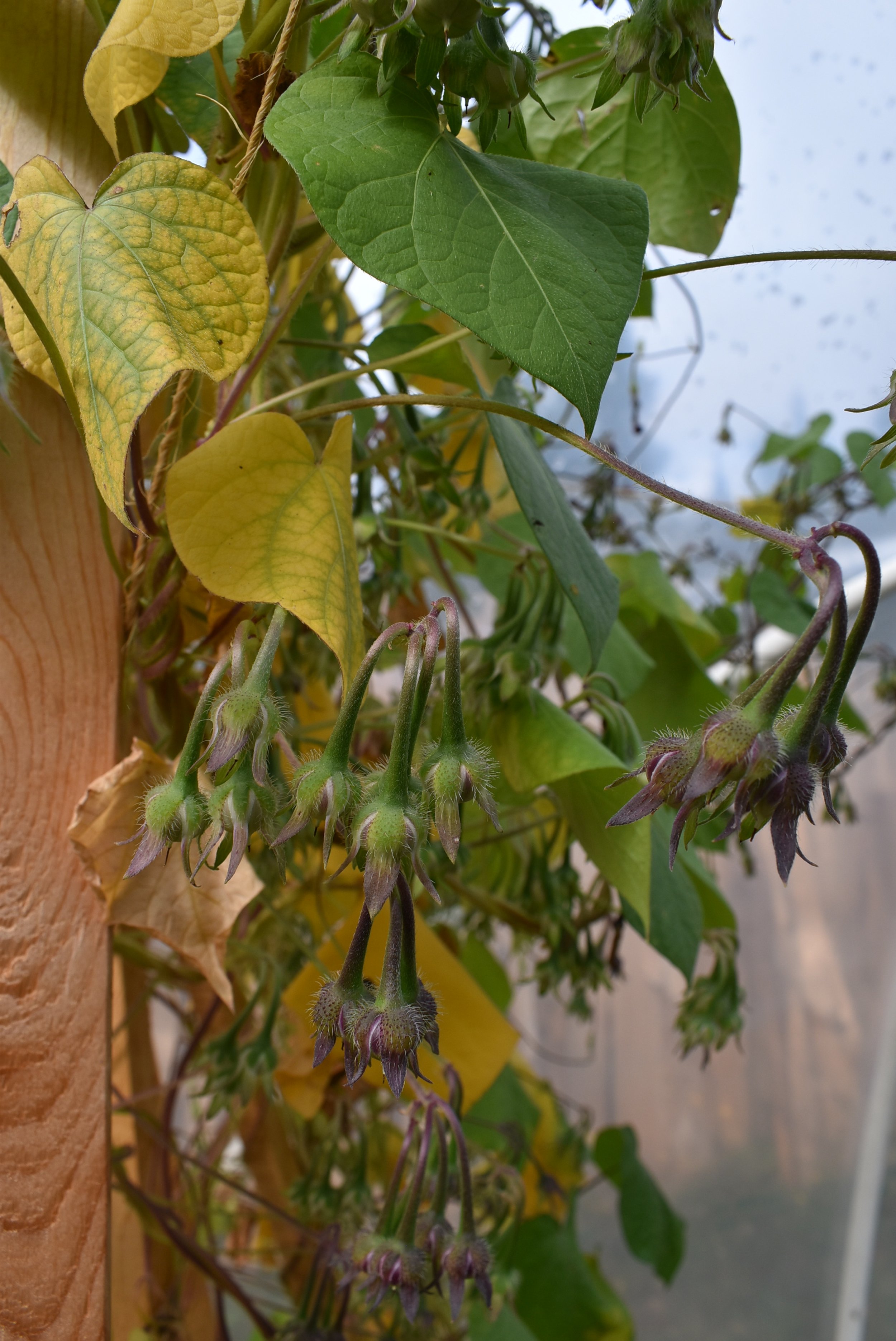Common Names
Purple Morning Glory, Tall Morning Glory
Botanical Name
Ipomoea purpurea
Note that this type of 'Morning Glory' is non-invasive and not to be confused with garden Bindweed (Convolvulus spp).
Plant Family
Convolvulaceae (Morning Glory Family)
Native Range
Mexico and Central America
Life Cycle
Annual
Hardiness Zone
2-11
Habit
The vigorous vines are twining, and will spiral around whatever support you give them, growing up to 8ft tall in height. Prolific trumpet-shaped flowers are tri-coloured and bloom in the morning.
Sun/Soil
The plants enjoy a place in full sun, in soil amended with lots of compost, and benefit if given lots of water.
Germination/Sowing
The seeds are satisfyingly large and germinate easily into sturdy seedlings with delightful perfectly heart-shaped leaves. They are best started indoors in the spring and then transplanted out once all danger of frost has passed.
Growing/Care
It is a joy to watch Purple Morning Glory climb up the trellis ropes and explode in luminous violet-blue bloom each morning. Each flower lasts for only one day and by late afternoon the flowers have all turned inward on themselves. New flower buds wait eagerly for the next morning when it will be their turn next to bloom.
As annuals the vines will expire at the end of the season, so make sure to save a few seed pods for next years sowing.
Harvesting
Once the flower shrivels and drops off a small round seedpod begins to swell and ripen. When the seedpods turn green to brown, and become papery, the ripe black seeds can be harvested.
Culinary Uses
None known.
Medicinal Uses
The seeds contain d-lysergic acid amide (LSA), a constituent that produces similar effects to LSD. In parts of Mexico, where the vines are native, the seeds have been traditionally used to invoke visionary states during healing ceremonies.
From ‘Plants of the Gods’ a book co-authored by Albert Hoffman, the discover of LSD: ‘They [Aztecs] consult it as an oracle to learn many things…Thirteen seeds are usually ground up and drunk with water or in an alcoholic beverage. Intoxication rapidly begins and leads to visual hallucinations. There may be an intervening stage of giddiness, flowed by lassitude, euphoria… The patient…falls into a sleep during which the plant children come and talk.’
Themes
Attracts Pollinators, Container Garden, Apothecary Garden, Sacred Plant.


















